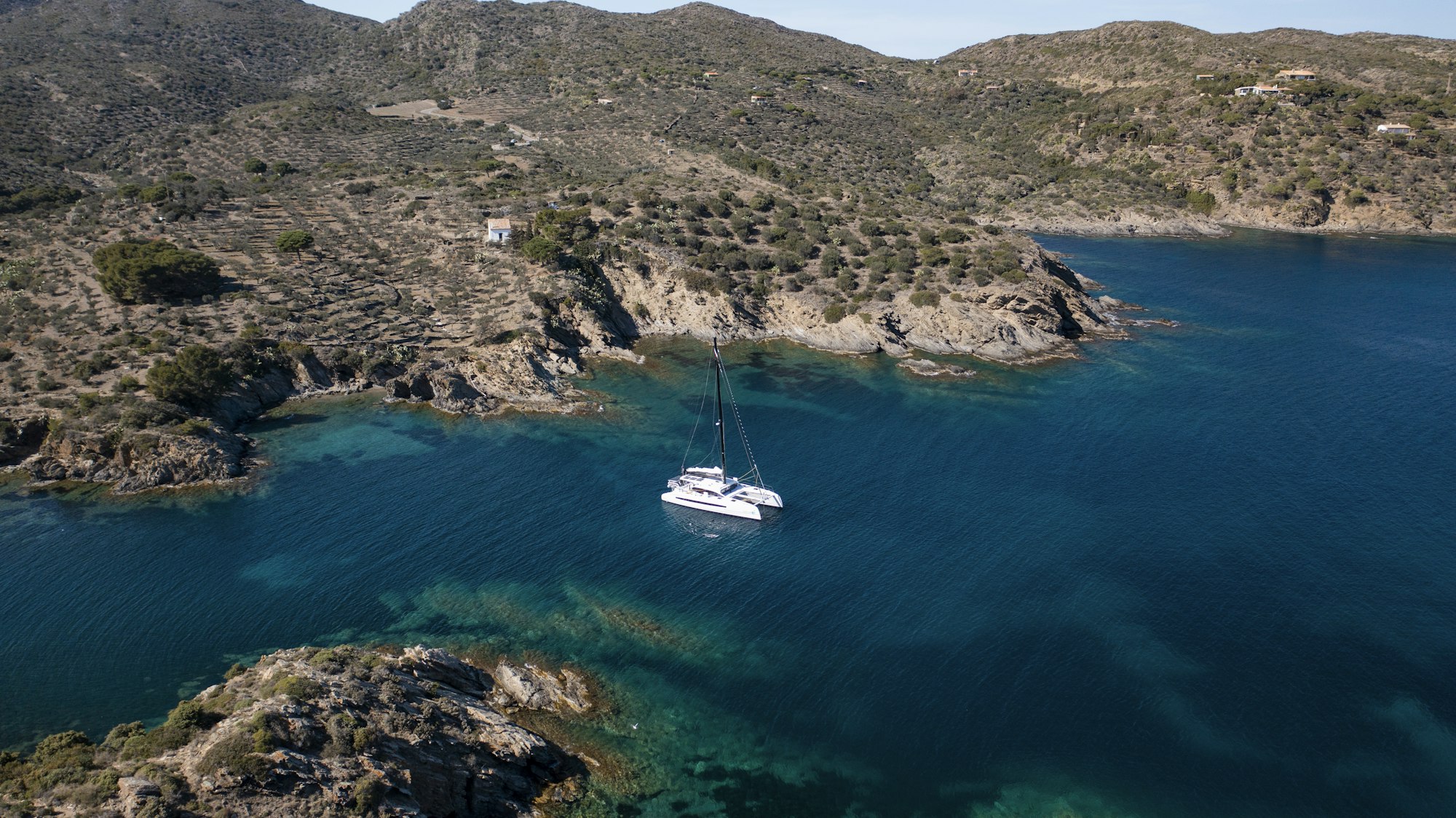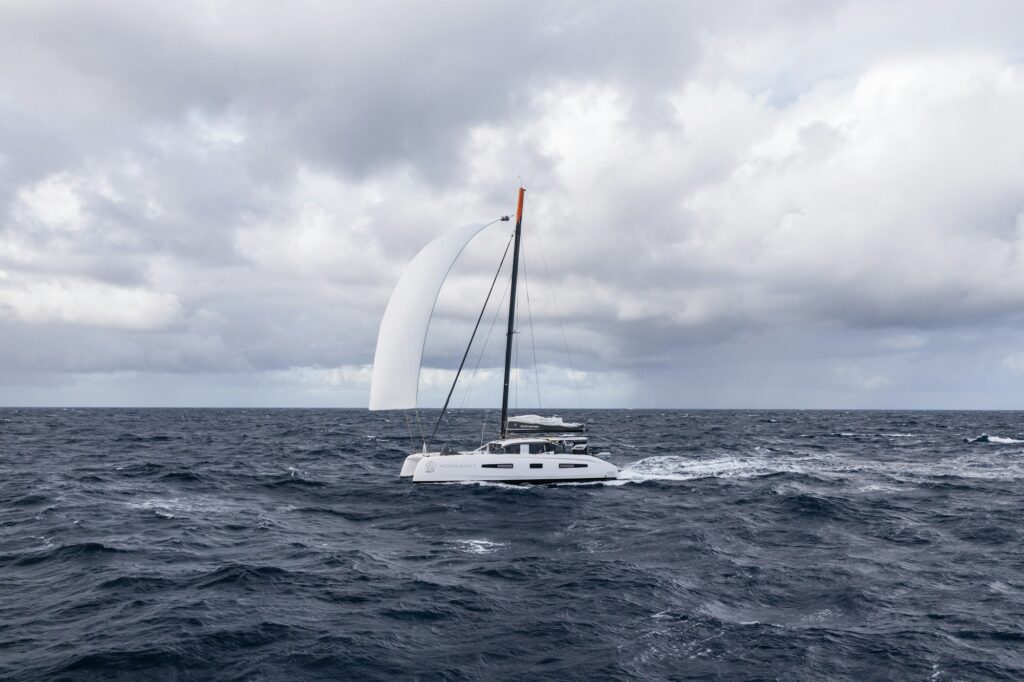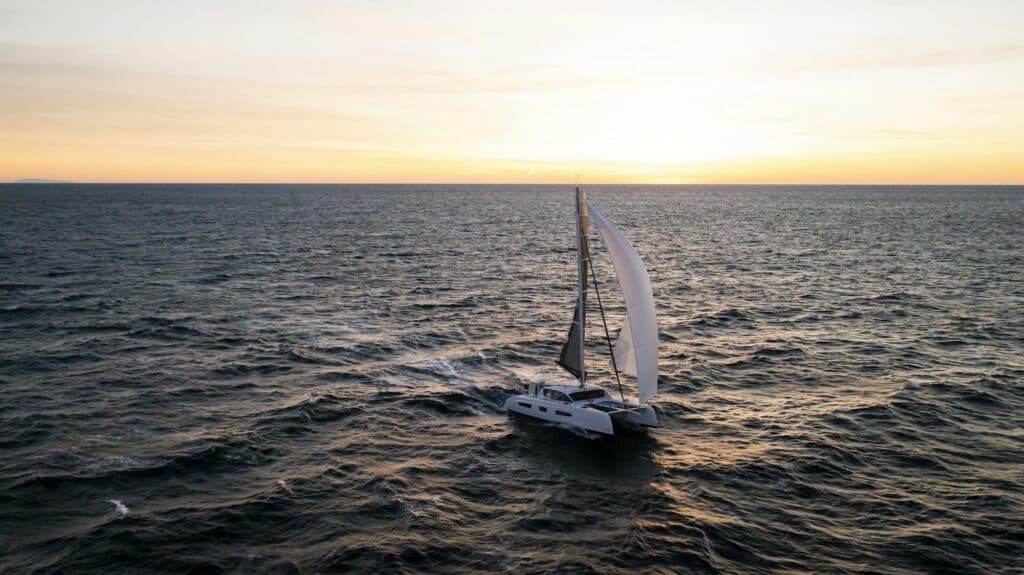
Sailing around the world is a dream come true: you discover the world to the rhythm of the wind and the stopovers, exploring new destinations every day as you sail. If you’re just starting to read this article, you’re probably nurturing this project.
Are you planning to sail around the globe? Then the choice of ship for your next voyage is crucial. It alone will determine how you experience this adventure! Do you know the differences between single-hulled and double-hulled sailing yachts for an ocean voyage? What are the advantages of sailing around the world in a catamaran, rather than a monohull?
Aboard a multihull, greater comfort and stability
When you decide to sail around the world, whether you’re going alone, as a couple or as a family, you’re always leaving your home and comforts behind to move aboard a monohull or catamaran. While you’ll always have to get used to living in different spaces, in a changing environment, the living space on each boat can vary. So, if you’re setting off on an adventure on a monohull, for example, you’ll inevitably have less living space than in a unit made up of two hulls. It’s up to you to work out how much living space and storage volume you need, depending on the crew you’re putting together!
The length of the hull, of course, will have a big influence on the interior layout of the boat and its facilities: the number of cabins, washrooms and the width of spaces often depend on the waterline length of a boat. Fortunately, choosing a larger catamaran for greater living comfort doesn’t mean sacrificing sailing comfort. Bénédicte Héliès, owner of the first Outremer 55, Saga, confided as much to our yard: “After our first round-the-world trip on our Outremer 51, our children were growing up and taking up more space, so we wanted a saloon that was a little more spacious, but just as easy to manoeuvre. We were delighted! Our new catamaran has proved to be very agile in light airs despite its size, powerful in a breeze and comfortable at sea. The platform is exceptionally spacious for such a seaworthy boat, and the living space in the saloon is very appreciable.
As you know, the comfort of a boat is mainly experienced when sailing. By opting for a catamaran on a round-the-world trip, you will always choose to heel less than you would aboard a monohull yacht. When sailing or at anchor, you’ll notice the difference aboard a catamaran: by definition, it is much more stable!
Read also: Monohull to multihull – Nikki Henderson

The evolution of catamaran performance
The perception of catamarans has evolved considerably over the last few decades, from boats mainly associated with chartering to multihulls capable of competing with monohulls in terms of performance.
In the 1960s and 1970s, catamarans began to appear in regattas, where their speed potential was already evident. At the famous Transpacific Yacht Race, for example, catamarans such as the Seasmoke broke records, proving their ability to sail fast over long distances.
A catamaran’s ability to sail upwind and close-hauled, once considered inferior to that of monohulls, has been enhanced by slimmer, more efficient hull designs, as well as improvements in rigging and sails. These technological advances have enabled catamarans to achieve previously unattainable performances, making them suitable for fast and safe ocean crossings.
Bénédicte can testify to this development: “The catamaran we’ve chosen sails easily in light airs. From 4-5 knots, it moves under sail, whereas classic catamarans need 10 to 15 knots to move properly, depending on the points of sail. So we use the engine very little and sail almost exclusively.
On long journeys, sometimes the weather conditions are not as forecast. They can also change more quickly than expected. If, for example, there’s a storm approaching that we weren’t able to anticipate, a good sailboat will enable you to reach your destination more quickly. Bénédicte explains: “On our boat, being able to ‘swallow’ 250 miles a day is very interesting. This means we can shorten crossing times and avoid being caught out by bad weather, as most phenomena can be predicted within 4-5 days”.
In short, today’s catamarans are no longer simply cruising boats designed for coastal sailing. They represent a serious choice for sailors looking to combine comfort, performance and safety, capable of competing with monohulls in the most demanding sailing conditions.
Read also: Why every serious cruiser should go racing

On a round-the-world catamaran trip, make the most of stopovers
You’ve probably already decided which islands or ports you’d like to visit.
Bear in mind that some catamarans allow you to make the most of anchorages and places to stop off: with a shallower draught than most monohulls, many allow their owners to get closer to the coast and beaches. With a catamaran, you can choose anchorages less frequented by other yachts to make the most of your time, and disembark more easily.
When you arrive in port or at an anchorage, for mooring, anchoring or taking a locker, catamarans also generally have the advantage of being more manoeuvrable than monohull yachts. So your arrival at your port of call will be much easier.
When you sail around the world, you inevitably meet other crews who are also travelling, and with whom you always find things in common. If you like having people over, welcoming them aboard your catamaran will be ideal!



